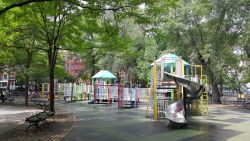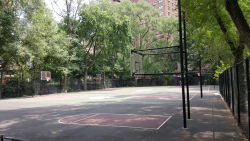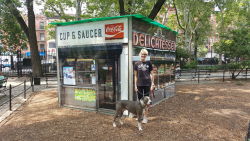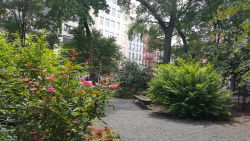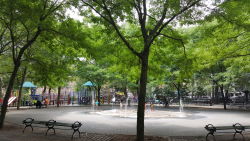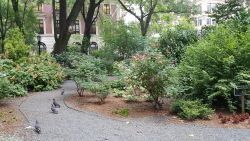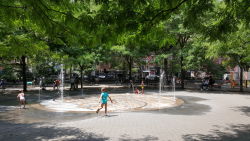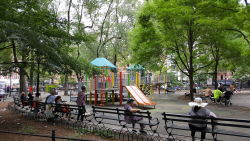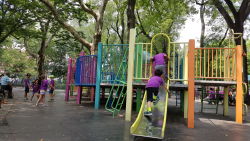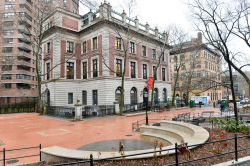Seward Park
Seward Park
Named for the New York statesman famous for orchestrating the purchase of Alaska in 1867, Seward Park, one of the largest parks on the Lower East Side, has the distinction of being home to the first permanent, municipally-built playground in the nation.
In 1898, settlement workers Lillian D. Wald and Charles B. Stover founded the Outdoor Recreation League (ORL) to promote organized games in public playgrounds as an alternative to play in city streets. The ORL opened nine privately-sponsored playgrounds on municipal parkland between 1898 and 1902, when the City of New York assumed operations of ORL playgrounds. This led to the construction of Seward Park the following year by the City.
When Seward Park opened on October 17, 1903, the playground in the northern section of the park featured cinder surfacing, a neo-classical recreation pavilion (outfitted with rocking chairs for mothers and children), and play and gymnastic equipment. The facility became a model for playground programming and design. The 1903 park plan also featured a large running track with an open play area in the center and a children’s farm garden in the southeast corner. Curving paths and a north-south mall divided the park into recreational areas. In 1909, Andrew Carnegie financed the construction of the ornate Italian Renaissance Revival-style library, landmarked in 2013, in the park’s southeast corner.
Born in Florida, New York, William Henry Seward (1801-1872) served as governor of New York for one term starting in 1839, and as a United States Senator from 1849 to 1861. He was then appointed by President Lincoln as Secretary of State, a position he also held under President Andrew Johnson. Seward, a staunch abolitionist successfully inhibited foreign intervention in the Civil War, is best known for negotiating the purchase in 1867 of Alaska from Russia, known as “Seward’s Folly”.
Seward Park underwent a major transformation in the 1930s and 40s. The Schiff Fountain (1895), honoring public health advocate and philanthropist William Schiff and designed by distinguished architect Arnold W. Brunner, was moved here from nearby Rutgers Park in 1936. The pavilion was demolished the same year, and a new recreation building was erected in 1941. The new design focused on active play including basketball, horseshoes, shuffleboard, roller skating, paddle tennis, and ice skating.
A previous renovation completed in 2001 celebrated the historic park with early 20th-century period benches and light fixtures, a historic fence, and a spray shower featuring a mosaic map of the neighborhood. The Lower East Side Tenement Museum provided inspirational quotations and reflections on civic and park life inscribed in the mosaic. Park designers made reference to Secretary of State William Henry Seward’s (1801-1872) famous purchase with the inclusion of a seal spray shower, a Mount McKinley play unit, and a bronze statue of the husky named Togo, sculpted by Shelley Smith Curtiss. Like Balto, whose statue is located in Central Park, Togo played a heroic role in the 1925 dash to bring an anti-diphtheria serum to Nome, Alaska.
In 2019, a large-scale redesign and renovation of the southeast courtyard and perimeter were completed through the Parks Without Borders capital construction initiative. The park design reduced fence heights and added features such as a storytelling alcove and wildflower garden that enhance the historic park’s accessibility and make it more welcoming.
Check out your park's Vital Signs
Clean & Safe
Green & Resilient
Empowered & Engaged Users
Share your feedback or learn more about how this park is part of a
Vital Park System

